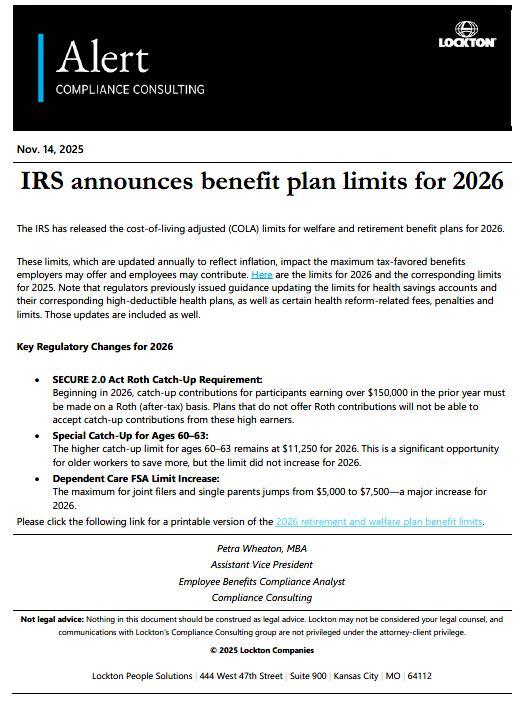The IRS has released the cost-of-living adjusted (COLA) limits for welfare and retirement benefit plans for 2026.
These limits, which are updated annually to reflect inflation, impact the maximum tax-favored benefits employers may offer and employees may contribute. Here (opens a new window) are the limits for 2026 and the corresponding limits for 2025. Note that regulators previously issued guidance updating the limits for health savings accounts and their corresponding high-deductible health plans, as well as certain health reform-related fees, penalties and limits. Those updates are included as well.
Key Regulatory Changes for 2026
SECURE 2.0 Act Roth Catch-Up Requirement:
Beginning in 2026, catch-up contributions for participants earning over $150,000 in the prior year must be made on a Roth (after-tax) basis. Plans that do not offer Roth contributions will not be able to accept catch-up contributions from these high earners.
Special Catch-Up for Ages 60–63:
The higher catch-up limit for ages 60–63 remains at $11,250 for 2026. This is a significant opportunity for older workers to save more, but the limit did not increase for 2026.
Dependent Care FSA Limit Increase:
The maximum for joint filers and single parents jumps from $5,000 to $7,500—a major increase for 2026.
Please click the following link for a printable version of the 2026 retirement and welfare plan benefit limits (opens a new window).
Not legal advice: Nothing in this alert should be construed as legal advice. Lockton may not be considered your legal counsel, and communications with Lockton's Compliance Consulting group are not privileged under the attorney-client privilege.


